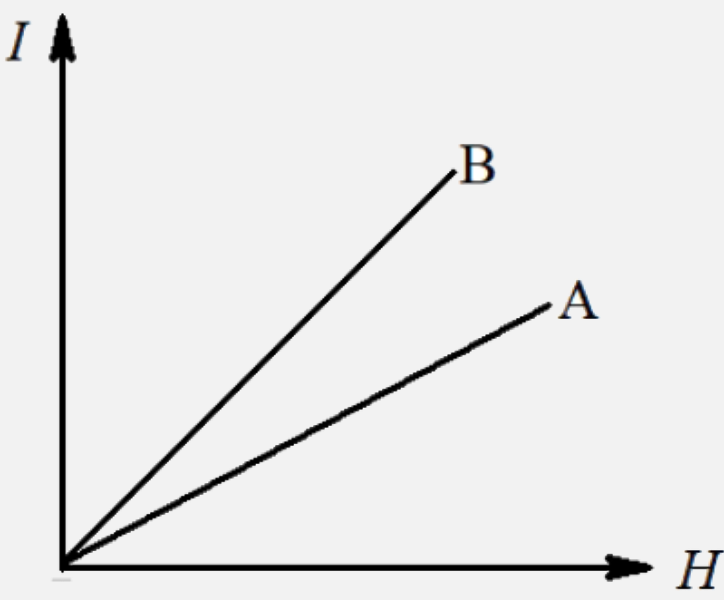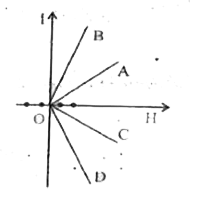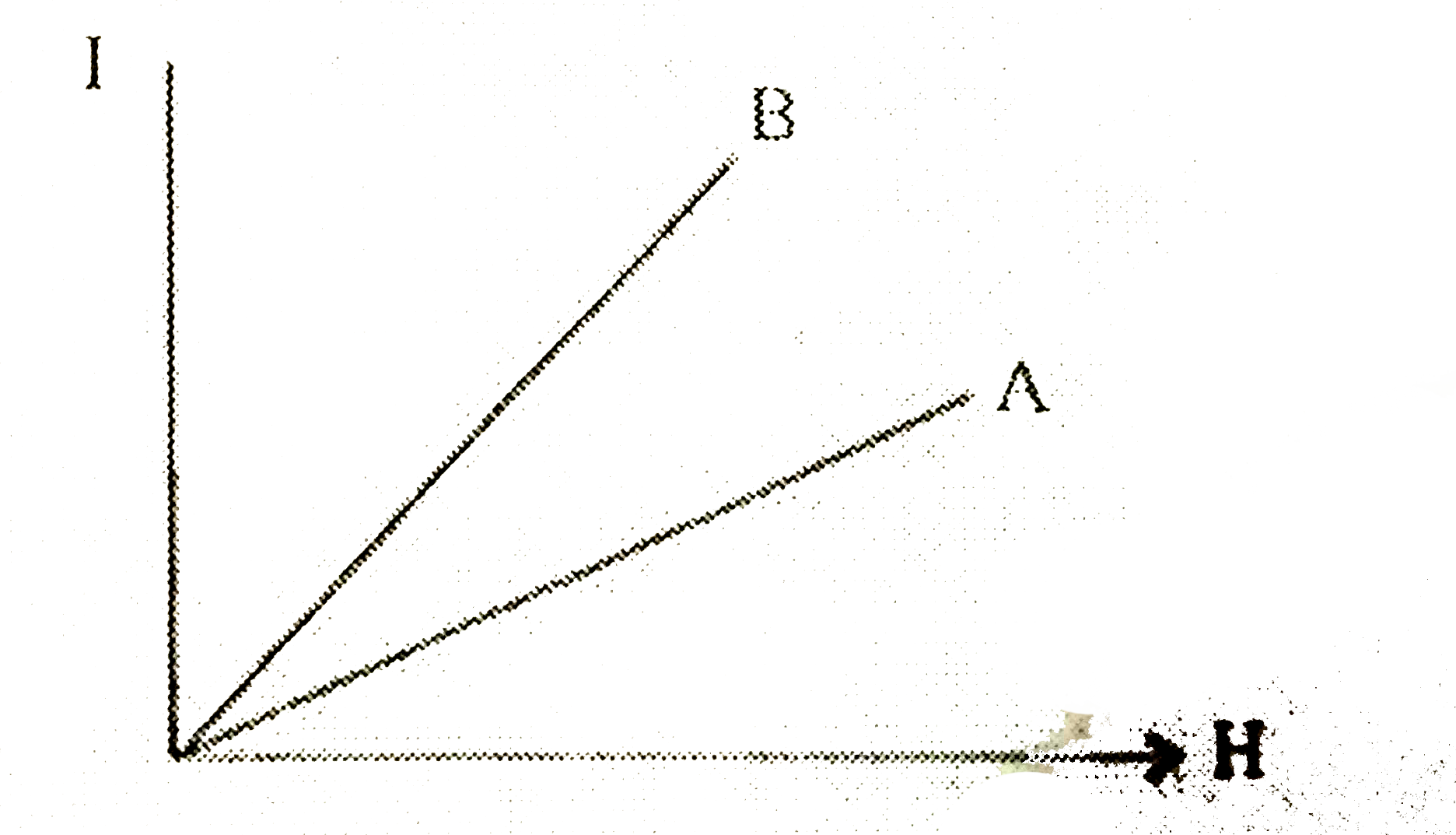How does the intensity of magnetization depend on an applied magnetic field?
To understand how the intensity of magnetization (I) depends on an applied magnetic field (H), we can break down the explanation into several steps:
Step 1: Define Key Terms
- Magnetic Field (H): The magnetic field is defined as the number of magnetic lines of induction crossing per unit area through a magnetic substance.
- Intensity of Magnetization (I): This is a measure of the magnetic moment per unit volume of the material.
Step 2: Understand the Relationship
The relationship between the magnetic induction (B), the permeability of free space (μ₀), the magnetizing field (H), and the intensity of magnetization (I) is given by the formula:
B=μ0H+I
Where:
- B is the magnetic induction,
- μ0 is the permeability of free space,
- H is the magnetizing field,
- I is the intensity of magnetization.
Step 3: Analyze the Effect of Increasing H
- Initially, when the magnetic field (H) is increased, the intensity of magnetization (I) also increases in proportion to H. This means that as we apply a stronger magnetic field, the material becomes more magnetized.
Step 4: Saturation of Magnetization
- However, there comes a point where, even if we continue to increase the magnetic field (H), the intensity of magnetization (I) reaches a maximum value known as saturation. Beyond this point, the intensity of magnetization becomes independent of the applied magnetic field.
Step 5: Conclusion
- In summary, the intensity of magnetization (I) initially increases with the applied magnetic field (H) but eventually saturates and becomes independent of further increases in H.
- Magnetic Field (H): The magnetic field is defined as the number of magnetic lines of induction crossing per unit area through a magnetic substance.
- Intensity of Magnetization (I): This is a measure of the magnetic moment per unit volume of the material.
The relationship between the magnetic induction (B), the permeability of free space (μ₀), the magnetizing field (H), and the intensity of magnetization (I) is given by the formula:
B=μ0H+I
Where:
- B is the magnetic induction,
- μ0 is the permeability of free space,
- H is the magnetizing field,
- I is the intensity of magnetization.
- Initially, when the magnetic field (H) is increased, the intensity of magnetization (I) also increases in proportion to H. This means that as we apply a stronger magnetic field, the material becomes more magnetized.
- However, there comes a point where, even if we continue to increase the magnetic field (H), the intensity of magnetization (I) reaches a maximum value known as saturation. Beyond this point, the intensity of magnetization becomes independent of the applied magnetic field.
- In summary, the intensity of magnetization (I) initially increases with the applied magnetic field (H) but eventually saturates and becomes independent of further increases in H.
Topper's Solved these Questions
- BOOK - MODERN PUBLICATIONCHAPTER - MAGNETISM AND MATTEREXERCISE - COMPETITIONFILE (EXEMPLAR PROBLEM OBJECTIVE QUESTION (MULTIPLE CHOICE QUESTION (TYPE-I))20videos
MAGNETISM AND MATTER
- BOOK - MODERN PUBLICATIONCHAPTER - ELECTROSTATIC POTENTIAL AND CAPACITANCE EXERCISE - Chapter Practice Test9videos
ELECTROSTATIC POTENTIAL AND CAPACITANCE
- BOOK - MODERN PUBLICATIONCHAPTER - MOVING CHARGES AND MAGNETISMEXERCISE - CHAPTER PRACTICE TEST13videos
MOVING CHARGES AND MAGNETISM
Similar Questions
How does the intensity of magnetization of a paramagnetic material vary with increasing applied magnetic field?
View SolutionThe following figure shows the variation of intensity of magnetisation I versus the applied magnetic field intensity H, for two magnetic materials A and B

Which of the material have a larger susceptibility for a given field at constant temperature?View Solution
Knowledge Check
- Question 1 - Select One
In a cyclotron, the applied magnetic field
Achanges only the direction of the charged particleBincreases only te speed of the charged particleCchanges the direction of the particle and increases the speed of the particleDneither increases the speed nor changes the direction. - Question 2 - Select One
The ratio of magnetisation I to the magnetic field intensity H is
APermeabilityBMagnetic intensityCDiamagneticsDMagnetic susceptibility - Question 3 - Select One
The variation of the intensity of magnetization (I) with respect to the magnetizing field (H) in a diamagnetic substance is described by the .
 AODBOCCOBDOA
AODBOCCOBDOA
The following figure shows the variation of intensity of magnetisation versus the applied magnetic field intensity, H, for two magnetic materials A and B :
(a) Identify the materials A and B.
(b) Why does the material B, have a larger susceptibility than A, for a given field at constant temperature?
 View Solution
View SolutionA unit for intensity of magnetic field.
View SolutionThe intensity of magnetization of the magnetic fields graph for a diamagnetic material is best represented by.
View SolutionFind the locus of the points where the intensity of the magnetic field due to a magnetic dipole will be perpendicular to its axis.
View SolutionThe ratio of magnetisation I to the magnetic field intensity H is
View Solution

